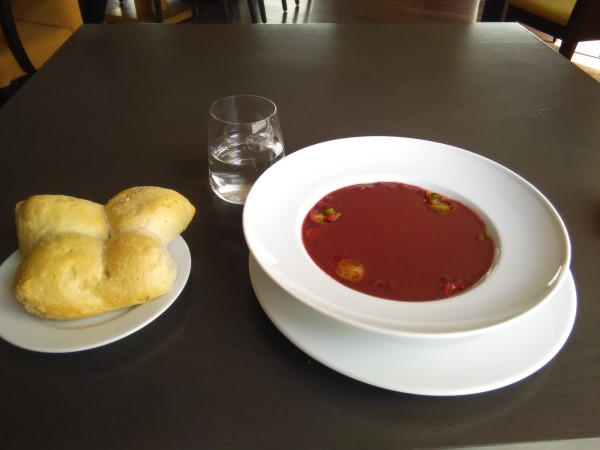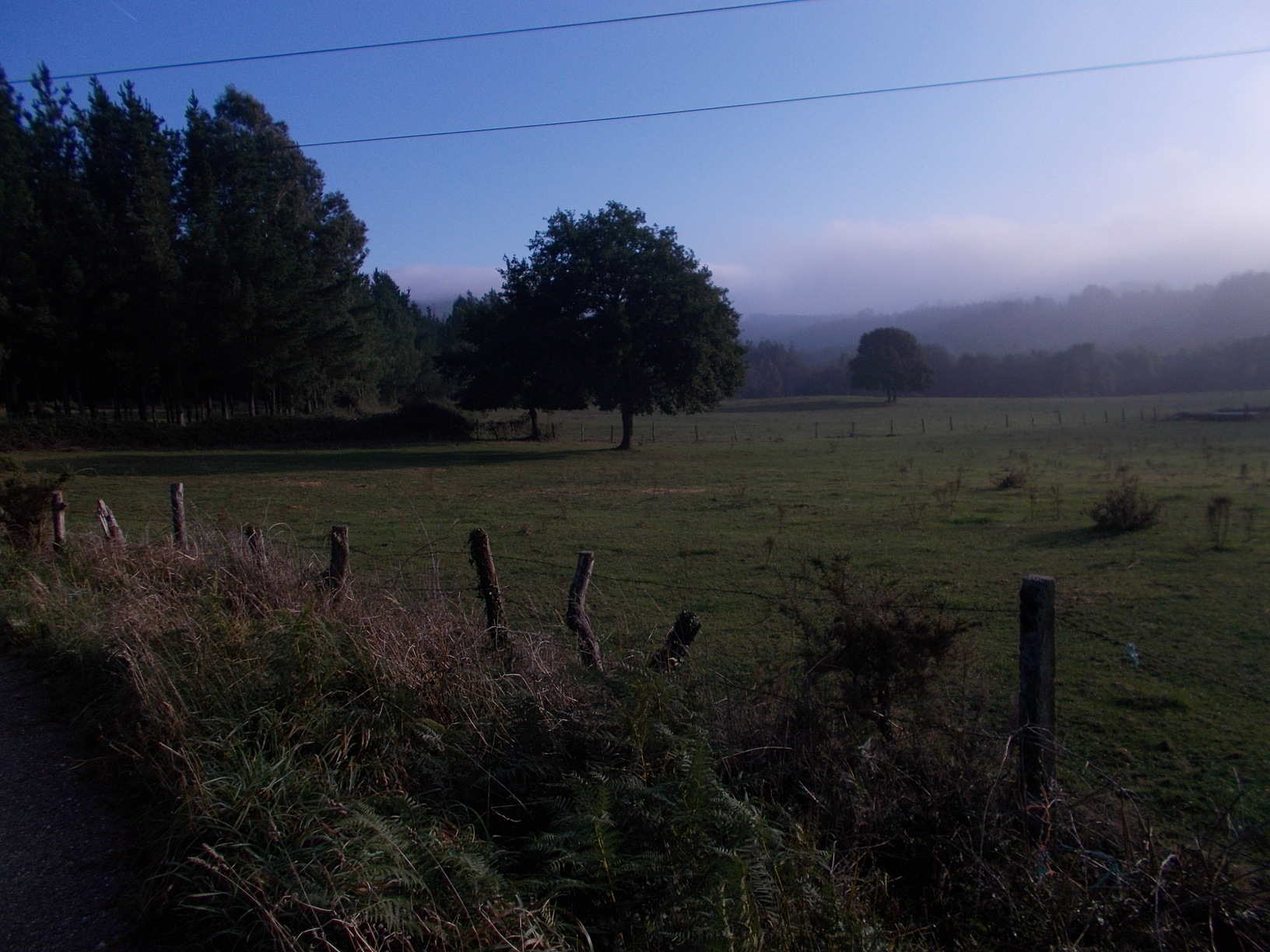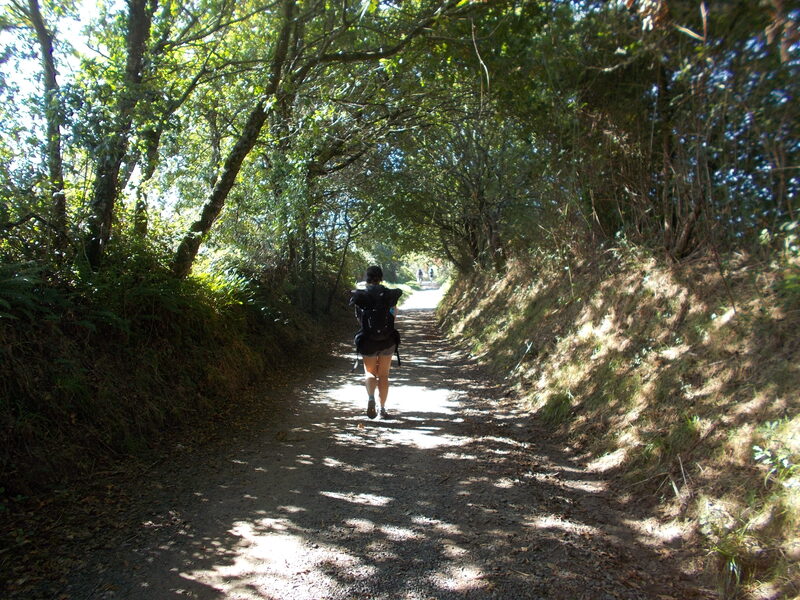You would be surprised how many people actually try to lose weight on the Camino. It is rarely their primary goal, or the main reason why they packed their stuff and left for a one month long pilgrimage in Spain (if not for a longer one), but it often sits high on their list of priorities. After all, why not enjoying all the Camino has to offer, and at the same time lose a few (or even many?) pounds on the way to Santiago?
But is this really possible? Is Camino de Santiago a right “setting” to lose weight, with the typical routine of a pilgrim? And what should you do to actually improve your chances of returning home not only with a newly found inner peace, but also with a much better figure? I will try to answer the questions on the following lines.
Table of Contents
Camino is accessible for overweight and obese people, without a significant risk of an injury
Let me start with good news. One of the things I really like about the Camino is its accessibility to almost everyone. Maybe you know this and maybe you don’t, but there are hundreds of long distance hiking trails/pilgrimages in the world, taking anything from two weeks to a year to cover, from the starting point to finish. If you embarked on a vast majority of these being obese, your chances of reaching the end would be close to zero. Because the trails are too difficult, technical, with a lot of elevation, and offering little infrastructure along the way. Sure, many of these trails are incredibly beautiful, but embarking on them being overweight or even obese is a terrible idea… Camino is completely different though.
First of all, especially on the French camino, you’ll find a place to sleep in every village, and the villages are often separated by a few kilometers only. Maybe you cannot cover 30 kilometers a day with your current weight. That’s not an issue on the Camino, because you can stop after five, ten, fifteen, twenty, however you feel on the day. What’s more, the fact that you cross so many villages and towns and always sleep inside allows you to walk with a much lighter backpack, which also helps a lot when it comes to your ability of successfully walking the camino with an extra stone or two.
I’ve walked many caminos in my life. And I can tell you that I’ve met people as heavy as 340 pounds (150 kilograms) walking the camino. I always had a lot of respect for them, because I knew how tougher they had it compared to me, or to other pilgrims on the way. To sum it up, do not be afraid of walking the camino when overweight or obese. It is possible, you won’t be the only such pilgrim on the way, and if you take it easy, walk with sticks, and listen to your body, you can definitely reach Santiago.

– Seemingly endless fields on Via de La Plata (Seville – Santiago de Compostela). Long nontechnical and flat dirt roads are much easier to walk on for someone overweight than rugged uphills and downhills in the mountains…
Do pilgrims lose weight while walking?
I wished I could give you a simple answer, saying how much pounds or kilos people drop in average on a 30-day long pilgrimage, but it isn’t that easy :)… First of all, it is much easier dropping weight when you carry a lot of extra weight on your body, than when you start relatively slim. I’ve talked to pilgrims that dropped as much as 10 kilos (22 pounds) on a single 30-days long pilgrimage, which is really a lot, considering that a typical recommendation of “safe” weight loss is dropping up to five kilos a month.
* May also interest you: What exactly to eat to lose wight on the Camino.
On the other hand, I actually met pilgrims who gained weight walking the camino, and many people (including myself) typically end their camino as heavy (or light) as their started. One kilo here and there doesn’t probably count for a real weight loss or weight gain. But how that’s possible? Don’t we all cover the same distance, the same trail, from Saint Jean Pied de Port (of Pamplona, or Irun, or Seville, or whatever) to Santiago de Compostela? Don’t we all do the same pilgrimage? Well, we don’t, and let me explain how I mean it, especially when it comes to weight loss.
You can make a pilgrimage both a fast and a feast
When it comes to weight loss, there isn’t any magic really. If your calories input is higher than your calories output, you are gaining weight. On the contrary, if you burn more calories than you consume on a day, you are losing weight. Of course, some nuances come into play (such as the way your metabolism works), but this law of action and reaction cannot be fooled.
Walking with a backpack, covering ten, twenty or even thirty+ kilometers a day, you are definitely burning more calories than you would burn during your typical daily routine, working in an office, or sitting in front of a TV. But the question is, how many calories are you taking in on an average day of your pilgrimage?
* May also interest you: How many days do you need to walk the Camino?
Walking the Camino, you’ll meet pilgrims with all sorts of approaches to eating. I remember people who lived almost entirely “from the land”, collecting almonds and grapes from around the trail, occasionally benefiting from a communal dinner in an albergue, or from the generosity of the locals who hosted them with this or that. Needless to say, their approach was rather extreme, but you can be 100% sure they all lost weight on the Camino.
On the other side of the spectrum were pilgrims who made Camino “a feast“, and it probably won’t surprise you that many of those were Americans :). I remember meeting a bunch of guys in a bar at noon, eating big bocadillos (baguettes) with ham and cheese, flushing it down with a beer. When I asked them if they were already stopping for lunch, they laughed and said it was too early for lunch. According to their own words, they were eating their third breakfast of the day. Lunch was yet to come. As you can likely imagine, once they eventually took pictures in front of the Cathedral of Saint James in Santiago, they were heavier than in Saint Jean.

– People waiting in front of municipal albergue in Bilbao (Camino del Norte), before it opens. As you can see on the picture, people of all sized and body-shapes meet on the Caminos…
Spanish diet isn’t the best for weight loss–unless you choose your meals carefully
I do not want to philosophize here about traditional Spanish diet, and how it was impacted by globalization in the last twenty years. Let’s focus on the food you can get on the Camino, and what pilgrims normally eat.
A typical diet on the Camino includes a lot of bread, which is served with every meal (if it isn’t the main meal itself, because eating a big baguette with something is not atypical for a pilgrim, or a pizza, which is just another form of a bread at the end of the day). Forget about wholegrain bread with a lot of seeds though. In 95% of places, you’ll get the white bread, which has a lot of calories and that’s perhaps all it offers.
* May also interest you: Ultralight packing list for Camino de Santiago, 2023 edition – take only what you really need.
Outside of bread, a typical “pilgrim menu” consists of french fries (oily), and a peace of meat, plus some starter (served with a lot of bread), and a desert (caloric as well), which doesn’t make either for a healthy meal, or for a food you should eat while trying to lose weight. The problem is that in many smaller places this pilgrim menu will be your only option, because you won’t find any other place to eat at. Of course, some pilgrim hostels offer a much better communal dinner, something with less calories, but more fiber and vitamins, but you’re not going to stay in such albergues every night, and unless you improve your daily eating, you won’t drop ten pounds on your pilgrimage.
How to adjust your pilgrim diet to actually lose weight on the Camino
Luckily we always have a choice. If you want to, you can buy most of your food in the supermarkets, opting for things like gazpacho, fruits and vegetables, light vegetarian/vegan sandwiches, whole grains, nuts, etc. You can still sit with your new friends while they eat their pilgrim menu in the restaurant, but perhaps you’ll take only the starter (a soup or a salad) and leave the bread aside. Or you will just drink a bottle of water while others feast of fries and meat.
Another more unconventional option is actually carrying a small cooking stove with you, and cooking your food directly on the trails. Once in a bigger place you can buy what you need in the supermarket, including healthier stuff like brown rice, couscous, legumes, leafy greens, and eventually make your own food, making sure you avoid the oily and salty pilgrim menu. I’ve done this once on a Camino (a less trodden one, with little infrastructure), and it definitely added an extra layer of freedom to my walk. Of course, such stove with a gas bomb & some food to carry between the cities will easily add 2 kilos extra to your luggage. But everything has some pluses and minuses, and it certain circumstances it may actually be the right choice for you.

– “Gazpacho de cerezas”, an Andalusian specialty I ate while walking Via de la Plata. Notice the big bread on the side. If you try to lose weight on the Camino, it is better eating just half of it 🙂
Fasting on Camino de Santiago–and extreme alternative to weight loss (and more)
Fasting is a controversial topic in general, regardless of whether we speak about public opinion or what the healthcare professionals would say. Nobody can deny though that it has a long tradition in both spiritual and religious life, and belongs to alternative healing practices all around the world.
If you walk your Camino for religious or spiritual reasons, maybe you can make fast a part of it. Now I do not mean a complete fast, not eating anything at all. That would be a disaster on a long walk, and instead of Santiago de Compostela you will end your pilgrimage in a hospital. But perhaps you can decide to abstain from eating sweets while on the camino, or from soft drinks, or even from eating bread. Or you can make a vow to skip dinner on every day, eating just breakfast and lunch.
It won’t be easy, which I know first hand, because I’ve done all sorts of fasts in my life. But it will get easier every day (as your body accustoms to the changes to your diet), and it can also add a special layer to your spiritual pilgrimage. Needless to say, you’ll find it much easier to drop some weight on your way to Santiago once you remove certain meals or food items from your diet.
Final thoughts
Weight loss is simple and complex at the same time. And the same is true about losing weight while walking the Camino. I hope my writing helped you to understand whether you can actually lose weight on the Camino, and what you can do to improve your chances of seeing the desired number on the scales once you return back home from Spain.
Should you have any additional questions, you can always contact us. I wish you a wonderful Camino!
Matej
May also interest you: Finding love while walking the camino – my personal experience.




![Ultralight Packing List for Camino de Santiago [2025 Edition]](https://caminolovers.com/wp-content/uploads/2022/03/altra-shoes-640-x-480.jpg)


